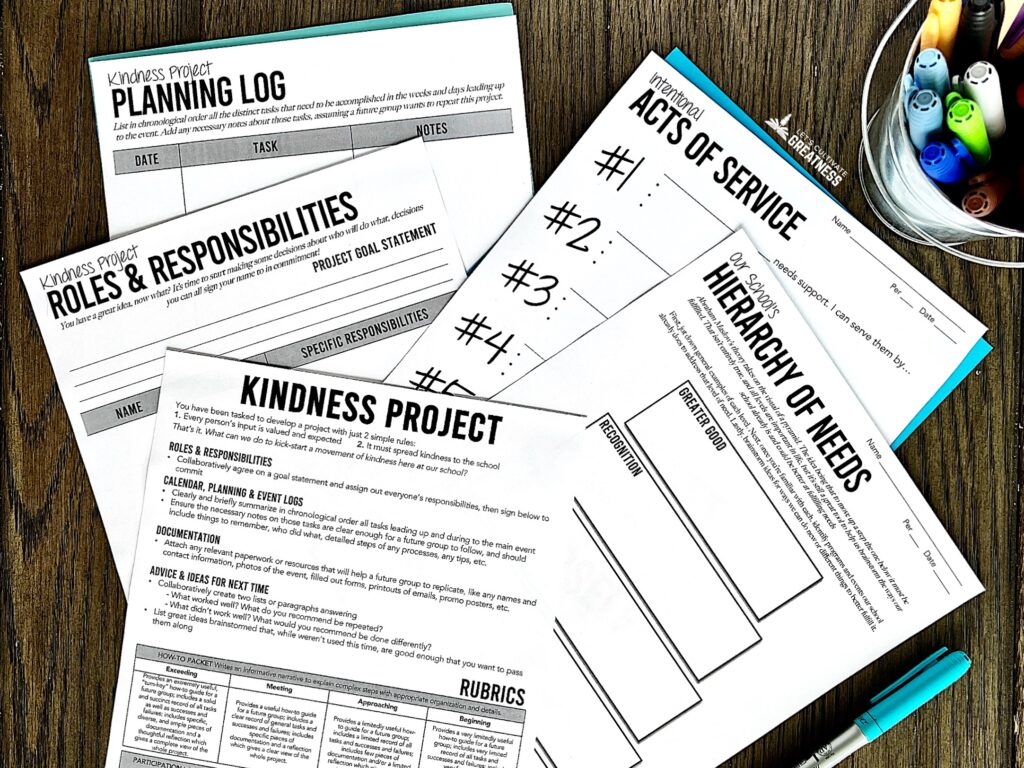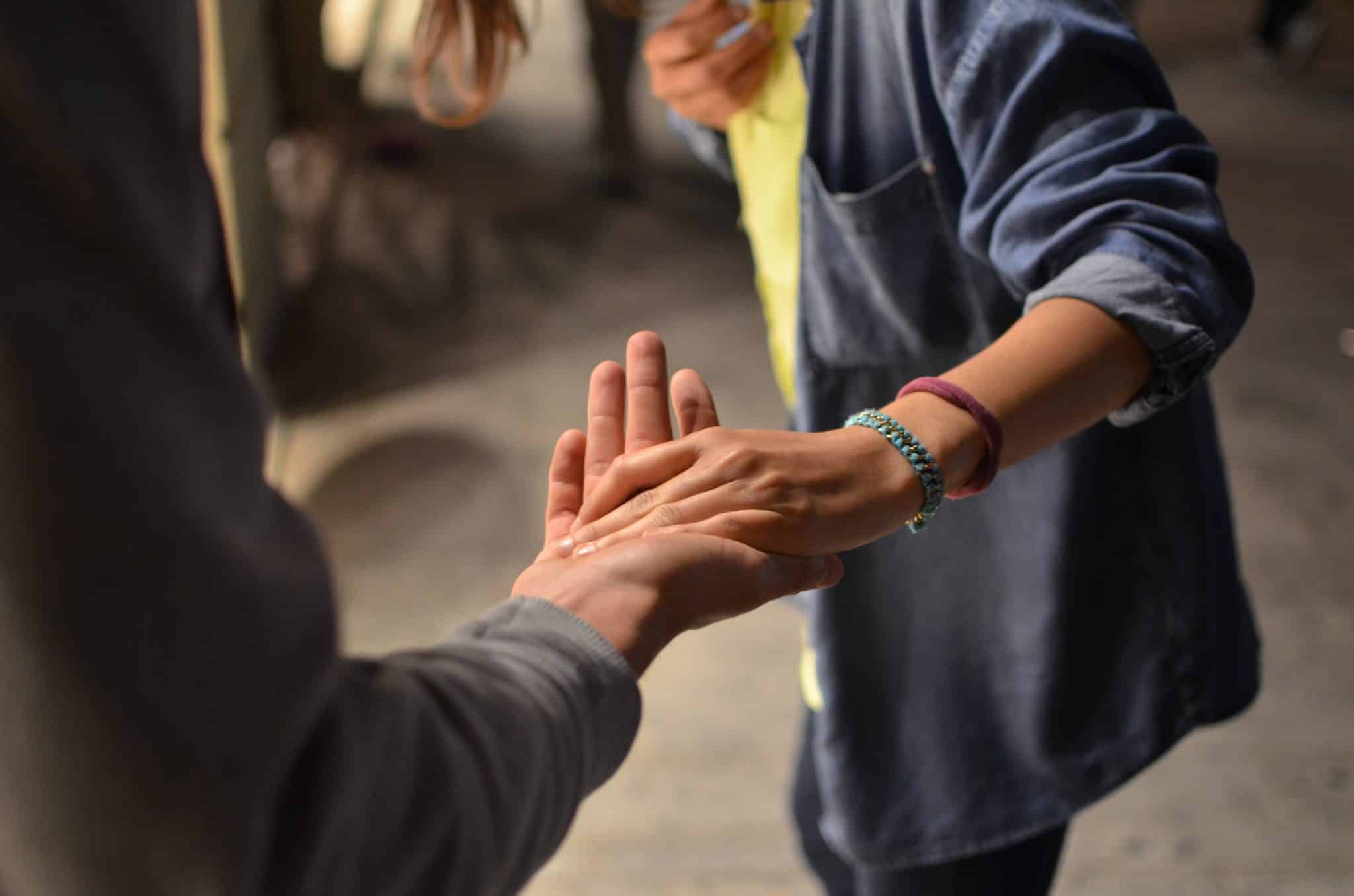As a Student Council Advisor and Leadership teacher, you’re somewhere between a coach and a teacher. It really is a sweet spot where you can make prosocial life skills the center of the lesson and then immediately apply them.
If you’re taking over a program or starting from scratch, your students may have strong incoming impressions about Student Council is… which usually include dances, bulletin boards, and having “fun.” And these ideas can be hard to change.
However, if you feel strongly about building a program with a purpose greater than having “fun” school events, welcome! You’re in the right place!
I never would have thought I’d become a StuCo advisor so when I did, I wondered if I could change the status quo. Over the years, I’ve developed what I call a service leadership approach. The premise is simple: the primary task of the leader is to serve.
Still host a tradition-filled Homecoming week, but instead of asking what sounds the most fun for your leaders, ask the question, “How can we best include, appreciate, and serve everyone this week?”
It’s a paradigm-shifting way to think about leading, especially for teens who are still learning how to look beyond their world.
But, so often, it’s exactly what they need.
The good news is that implementing a service leadership-centered program is more about little nudges than throwing out and starting over. And those nudges can happen anytime.
Below are three core elements you can start weaving into your program today.
Active Listening
First and foremost, you can’t serve until you’ve listened.
Active listening is listening with the intention to understand what is being said. It’s a skill we all could be better at, but it’s fundamental for serving. That’s why one of the first Leadership Skills lessons we do at the start of the school year is one on better listening skills.
You can’t truly help others until you can see their perspective, yet often people become leaders because they feel they already have solutions.
Seeking others’ input from others may be the very first planning step of a big project or be invaluable afterward as your group reflects. It could even be necessary at a project’s mid-point before proceeding ahead.
The point is—your students should be constantly asking the question, “Who will this affect and how can I get their input?” as they plan their events and projects.
Who can give input on “These spirit-day dress-up themes aren’t accidentally excluding anyone, are they?”
Or “Have we forgotten anyone we need to show appreciate for?”
Action Item: Have your leaders ask themselves what groups they represent at your school. Everything from sports teams and clubs to various ethnic communities and grade levels.
Then identify which groups aren’t represented. Moving forward, have students seek input from those groups when making decisions that affect them.
Accountability
To our mission statement, that is. Every year after the icebreakers, one of the first tasks we do is to write a collective mission statement and sign our names to it.
First, we look at a few good and bad examples from the corporate world, then I let my students brainstorm first drafts in small groups. Using consensus, they merge them into a single, final draft.
Throughout the whole process, my only input is that somewhere there must be one word, and it’s not “serve.” It’s “include.” Beyond that, it’s entirely theirs.
“To serve” isn’t concrete enough. But if we have “to include” in there, I can point and ask, “Is being inclusive?” or “Is including the needs of…?”
Everything we do, from our holiday candy grams to our dance playlists to our assembly games, must honor that commitment.
Plus, having it written, agreed to, and posted takes the onus off me to be telling students they can’t do something, rather I can just point and ask, “Are we being accountable to our mission?”
Just like with active listening, keeping each other accountable happens daily. It’s not only during a formal brainstorming session that students need to connect back to their mission, but also in their everyday decisions, planning, and debriefing.
Action Item: The next time your group is debriefing after an event, ask your group these three reflection questions:
How well did we consider and plan for the needs of everyone in our school community? How do we know?
How well did we fulfill the needs of our school community? How do we know?
What feedback did we hear that will help us better serve people next time?
If you want to incorporate reflecting more into your program, be sure to grab my StuCo Leadership Reflection Question flip deck, which includes 56 questions.
Anonymity
This can be the hardest of the three for teenagers to embrace, which is exactly why I’m okay nurturing it in my student leaders.
To really serve, one needs to not be in it for recognition. So often it is the already-popular, well-situated students who make up your student council program. These are the kids who love being on camera, behind the microphone, and on the gym floor.
I want to nudge my group to be more conscientious of this and find ways to share or hand off the spotlight. I want them to learn how to serve generously and selflessly.
What this looks like in assemblies—handing the mic off to the soccer team captain or Key Club president to talk, rather than talking about those groups’ accomplishments.
Or when taking photos for dress-up day advertisement posters—asking students outside our program if they want to model the goofy outfits.
This sense of working in the background is also an expectation for our events like dances.
A great host floats around in the background, making sure all their guests are taken care of. Serving involves setting up, managing the event, and cleaning up—it’s not showing up fashionably late to dance to a playlist of your favorite songs.
Set the expectation the planning committee for any event are its hosts. They need to arrive early to set up and/or stay after to clean up. They need to keep an eye on the refreshments for restocking. They are small shifts, but they make a big impact on the meaning of leadership.
Action Item: Change the way you talk about events. Your student leaders are the hosts. They are hosting the dance or assembly. Hosts still totally have fun at the events. They do so through the act of serving others and making a positive experience.
Ready to transform your StuCo program to one of service? Click to get my FREE Service Leadership Starter Kit instantly in your inbox. It includes lessons and everything to do your first service-centered school project!

Feature image credit: Remi Walle









